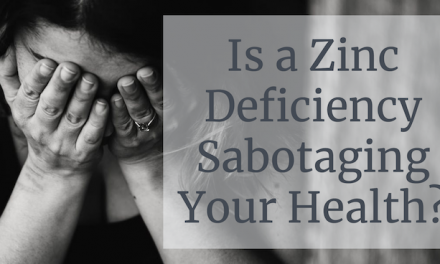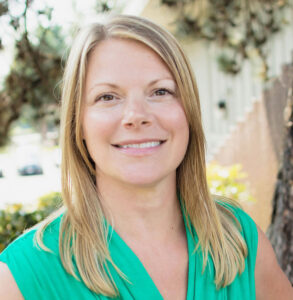These fermented peppers are right up with fermented herbs as one of my favorite ferments! With the herbs, I am finding a tasty way to preserve the fresh taste of the overflowing bounty that comes out of my garden, not so with the peppers. Sadly, I have never had luck growing red bell peppers in the Pacific Northwest, so I have to get these from my co-op or farmer’s market.
This recipe works with all sorts of peppers, but red bell peppers are my absolute favorite. Use your fermented peppers on on top of a salads, hummus, or anywhere you would use a roasted red pepper.

To make fermented peppers, you will need:
- 5 or 6 red bell peppers
- 1 tablespoon Celtic sea salt
- Starter culture (I use Cutting Edge), or 2 tablespoons whey or brine from another ferment (be advised that results will vary with these last two options)
- 2 cloves smashed garlic (optional)
- Sterilized quart mason jar
- Airlock lid (optional)
- Fermenting weight or large flat sterilized rock
Directions for Fermented Peppers:
- First, roast the peppers on a baking tray. I put the top rack all the way up and do this by broiling on high. You want the outside to get blackened and charred. Turn the peppers periodically to be sure they blacken all over. (For spicy peppers, you can omit this step. Just seed and chop them.)
- Place your peppers in a glass bowl and cover them with a towel. Find something else to do while you wait for them to cool down, like make these fermented herbs.
- While you are waiting, you can mix your starter culture with some cool filtered water. Follow the directions on your package. I use a half package of Cutting Edge starter. (Note that you do need to use a starter culture because we have roasted the peppers and killed any naturally occurring bacteria that was present. If you don’t roast the peppers, you could just ferment with 3 tablespoons of Celtic sea salt.)
- Dissolve your Celtic sea salt in a bit of hot filtered water.
- Once your peppers are cooled, seed them and peel off the skins and compost. All of this should come right off easily.
- Next, cut your peppers either into strips or bite-sized pieces. I like both options, but stick to one size per jar so that all the pieces ferment at the same rate.
- Fill your jar with your cut peppers, garlic, and dissolved starter culture.
- Next add your dissolved salt. Be sure it has cooled down to where you can comfortably stick your finger in it. We don’t want to kill the bacteria in the starter culture!
- Fill the jar the rest of the way with room temperature filtered water. Be sure to leave at least an inch of head space for expansion.
- Add your fermentation weight (or rock) to weigh down your peppers and keep them tucked safely under the brine solution.
- Top your jar with your airlock lid (optional, but very recommended as it allows air to escape but not to enter which keeps your ferment safe!)
- Set your jar out of direct light for about 3 days and up to a week. Keep checking in on your ferment from time to time to see if it has reached your desired taste. Once it does, put your fermented peppers promptly in your fridge to slow fermentation. Enjoy!!
Fermented Peppers
Ingredients
- 5 or 6 red bell peppers
- 1 tablespoon Celtic sea salt
- Starter culture
- 2 cloves smashed garlic optional
- Sterilized quart mason jar
- Airlock lid optional
- Fermenting weight or large flat sterilized rock
Instructions
- First, roast the peppers on a baking tray. I put the top rack all the way up and do this by broiling on high. You want the outside to get blackened and charred. Turn the peppers periodically to be sure they blacken all over. (For spicy peppers, you can omit this step. Just seed and chop them.)
- Place your peppers in a glass bowl and cover them with a towel. Find something else to do while you wait for them to cool down, like make these.
- While you are waiting, you can mix your starter culture with some cool filtered water. Follow the directions on your package. I use a half package of Cutting Edge starter. (Note that you do need to use a starter culture because we have roasted the peppers and killed any naturally occurring bacteria that was present. If you don't roast the peppers, you could just ferment with 3 tablespoons of Celtic sea salt.)
- Dissolve your Celtic sea salt in a bit of hot filtered water.
- Once your peppers are cooled, seed them and peel off the skins and compost. All of this should come right off easily.
- Next, cut your peppers either into strips or bite-sized pieces. I like both options, but stick to one size per jar so that all the pieces ferment at the same rate.
- Fill your jar with your cut peppers, garlic, and dissolved starter culture.
- Next add your dissolved salt. Be sure it has cooled down to where you can comfortably stick your finger in it. We don't want to kill the bacteria in the starter culture!
- Fill the jar the rest of the way with room temperature filtered water. Be sure to leave at least an inch of head space for expansion.
- Add your fermentation weight (or rock) to weigh down your peppers and keep them tucked safely under the brine solution.
- Top your jar with your airlock lid (optional, but very recommended as it allows air to escape but not to enter which keeps your ferment safe!)
- Set your jar out of direct light for about 3 days and up to a week. Keep checking in on your ferment from time to time to see if it has reached your desired taste. Once it does, remove it promptly to your fridge to slow fermentation. Enjoy!!












what’s the difference between naturally using just salt brine for fermentation and a packaged culture? If I just did salt brine, would there be only 3 types of bacteria compared to the packaged or vice versa? I’m looking to get the most amount of probiotics
Hi Sara,
For this recipe, you need to use a packaged culture because the peppers are roasted. The heat from the roasting will kill the bacteria that was on the peppers originally. For recipes using raw veggies like sauerkraut and my fermented jicama sticks, you can do either. With the packaged culture, you have better quality control, but less of the “natural” bacteria that was on the vegetable. There are varying opinions about which is better for you, but I tend to use a packaged culture (except for sauerkraut and kimchi) for the quality control factor. I am just too busy to deal with failed ferments. As for the probiotics, most of them actually die when they hit your stomach acid (although there are multiple benefits from the ones that do make it through). The main benefit of fermented vegetables is that the fermentation process made all of the nutrients in the vegetable more bioavailable (easy for your body to use) and created beneficial acids as well. So, either way you have an extremely nutritious end product. Hope that helps! Let me know if you have any more questions.
Chelsea
Awesome recipe idea, thanks for sharing! Admittedly I haven’t yet tried fermenting any roasted vegetables, so this is perfect for getting started. I’m thinking they’ll be good alongside a barbecue or picnic this Summer!
Do you have any advice on making these without a starter culture? I tend to lacto-ferment, but roasting will kill the probiotics and enzymes, so I was thinking about adding in some sliced raw garlic or ginger to give it a boost and letting it go from there.
Thanks Chelsea! 🙂
James